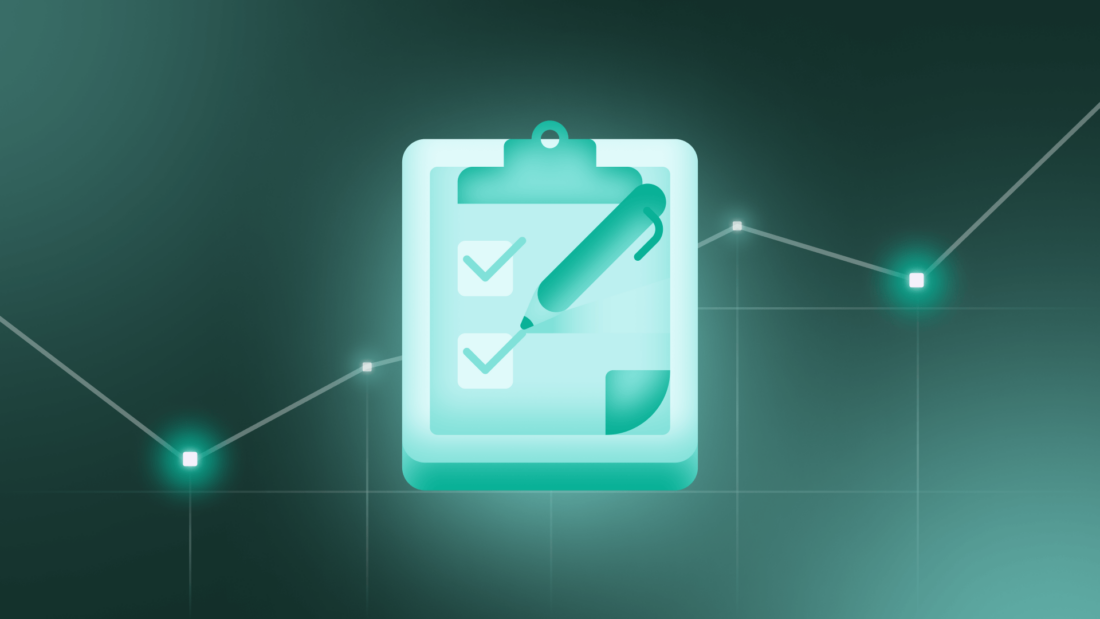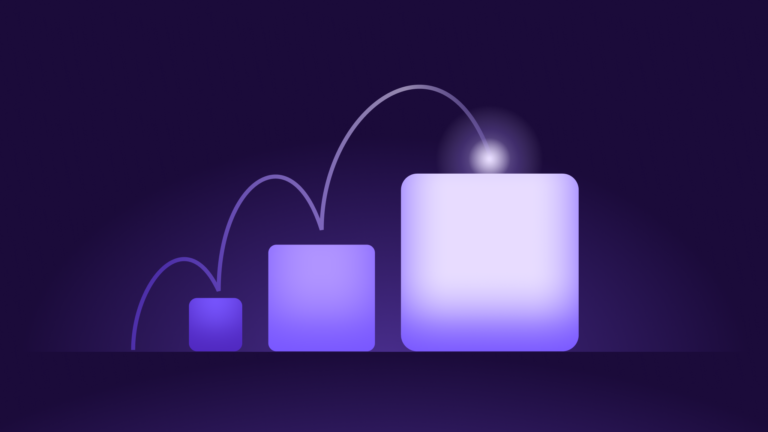
Beyond launch day: How to plan successful B2B product rollouts

Believe it or not, rolling out a new product can be a lot trickier for B2B companies. And there are several reasons why.
For one, in an ideal scenario, any new feature release requires a healthy amount of testing and, unlike B2C companies which build for general consumers and might have millions of users, most B2Bs are lucky to have a few thousand people regularly using their products. With such small sample sizes, you can’t be constantly mass testing like you would in B2C. This fact inherently increases the risk involved with launching new features.
Further, most B2B tools are productivity-boosting tools, which means when you do launch a new feature, you don’t always want to try to drive adoption with what could be noisy in-product messaging or tours. This is why go-to-market (GTM) teams play a large role in B2B rollouts, whether it’s running training with their account teams or answering basic support questions. B2B launches are very much a cross-functional effort.
In this article, I’ll show you how my team and I approach product rollouts at Mixpanel in four major stages—and why no step should go skipped.
The 4 stages of a successful product rollout
The best way to ensure a smooth product rollout is to have a phased approach supported by ample prep work. You don’t want to roll out a big feature to your entire customer base just to realize that there was a bug that the QA team missed.
Stage 1: The pre-rollout
In B2B, planning the launch of a new feature or product should happen weeks—sometimes even months—before the product team even starts building anything. This is largely because of the challenges that are inherent in B2B.
B2B products often have to appeal to many different personas. Take Mixpanel, for example. We have a wide range of user types, from marketers to engineers to product managers and more. Any new features we build have to appeal to some combination—and sometimes all—of these personas.
Before a line of code is written or a button is designed, we need to understand the personas that will be using this new feature and their true needs. This is crucial because it determines how we might position and market that feature, how we enable our sales team, and so on. Writing up the press release for your theoretical new feature can be a helpful exercise here.
Working backward, the product team (engineering, product, and design) can decide how we might build the feature to ensure it’s a success based on the positioning.
With positioning work done and building underway, we start preparing our internal teams with enablement materials and training. For example:
- What is the feature?
- Who is it designed for?
- How does it work?
- What is the pricing?
And other technical gotchas…
We have to be ready with answers for any questions that our customer success, support, solution engineers, sales, and post-sales teams might get. So it’s very helpful to collaborate with those teams to anticipate these questions. They’re the end consumers of this training, after all.
Whereas building the right feature could be 60% to 70% of the work in B2C, it’s closer to only 20% of the effort in B2B rollouts.
Key teams to involve: Product Marketing, Sales Enablement, Customer Success & Support
Key Mixpanel reports used: Flows (to look at workarounds being used today)
Stage 2: The phased rollout
Now, we can start actually rolling out the new product or feature. We’d recommend doing this in three phases.
Phase 1: 10%
First, make it available to a small percentage of your user base—we usually go with 10%. Don’t worry too much about adoption yet. Your goal for now is just to monitor your core user metrics in product analytics and make sure you haven’t broken anything. For example, if you were getting five support tickets a day and then suddenly began getting 100 after your 10% rollout, that would be a problem.
In addition to monitoring data, it’s important to start gathering feedback as soon as you start your 10% rollout. We even go as far as having the support team join our standups to talk about tickets concerning the new feature. The sooner you can get customer reactions from your support and account teams, the sooner you can understand what is (and isn’t) working and start iterating on the product.
Phase 2: 50%
Once you’ve determined that your metrics are still looking good, initial feedback is stable, and you haven’t broken anything, you can make the feature available to more users—our team typically expands availability to 50%.
It’s ideal to maintain this rollout phase for two to three weeks. That way you have enough time to spot trends and get an idea of whether your hypotheses were right or need to be modified. For example, you might expect X users a day, but you aren’t hitting that number. Perhaps you need to beef up your internal and external promotion strategy.
At this point, your customer-facing teams are also likely getting more questions from users and customers. This is valuable feedback and your product team should continue to iterate at this stage because if a user tries your new feature and it’s not good (first impressions are important), it’s highly unlikely that they’ll come back to use it again.
Phase 3: 100%
By now, you’ve made all the iterations you wanted to make and the product is truly ready for the big time.
You can open up the new product or feature to everyone now. Continue to get feedback from users, but focus more on changes that you can make on a larger scale going forward—how can you meaningfully improve the product in the future?
It shouldn’t be about small iterative changes anymore because the bulk of those should’ve come during your 10% and 50% rollout phases.
Key teams to involve: Support, Engineering, Product, Design, Customer Success
Key Mixpanel reports used: Insights (to monitor core metrics and trends), Funnels (to see drop-offs at key stages)
Stage 3: Demand gen and marketing
Now that your product is out in the world, it’s time for a big marketing push to get the word out to all your customers (and prospective customers) and get them excited.
It’s good to have a range of content like launch blogs and videos. We’ve found Looms are very effective, and we see a lot more adoption from using them to explain new features to users. If producing a beautiful video means waiting a few weeks on your marketing team, it might be better to get scrappy and have something functional out there in the meantime because making sure your audience knows about the right feature at the right time takes top importance. Most people won’t seek out new features on their own unless they really need it, so it takes a continuous cadence to catch them when ready.
(For larger launches and flagship features, of course, you might just have to take the time and wait for more polished videos.)
You’ll also want to make sure your marketing team has all the information they need to create ad campaigns (for large pushes), publish content on the blog, and communicate the benefits of the new product to prospects. Arm them with information like:
- Ideal customer profile (ICP) and industry or personas
- Use cases and details about product benefits
- Pricing and packaging (if applicable)
Key teams to involve: All marketing teams (including Product Marketing, Demand Gen, Content, Video, Brand, and so on)
Key Mixpanel reports used: Monitor the rollout dashboard built with reports above to see which hypothesis worked and amplify that message. Also, heavily use View Users to reach out to power users and get feedback/ customer stories for marketing content.
Stage 4: Continuous customer feedback
You’ve successfully launched your product (congratulations!), but the work isn’t done.
Make sure to continue monitoring customer feedback via different channels—support tickets, events, case study interviews—sometimes you’ll even see product feedback on social media channels.
Have a standing monthly check-in to review feedback and metrics for the next 4–6 months with the larger product team (including some GTM representatives) to determine the future direction post-launch and the level of further investment we may or may not want to put into this in the next planning cycle(s).
Key teams to involve: Support, Customer Success, Sales, Product Marketing
Key Mixpanel reports used: Retention report (to see Month 1+ retention), the rollout dashboard, and a support tickets dashboard (which we also have built in Mixpanel internally)
Make your next product rollout a success
Even though B2B user bases tend to be smaller, a successful feature or product rollout can be a lot more impactful for B2B companies—and it’s a much bigger achievement for product teams that can pull it off.
As we’ve covered, getting it right demands meticulous planning. With the right tools, even small, resource-constrained teams can ensure every product rollout goes as smoothly as possible. Solutions like Mixpanel are designed to support every step in the process, from helping product teams monitor key adoption metrics to providing marketing teams with user insights that inform their campaigns.
Learn more about using Mixpanel’s reporting and analytics in your next product rollout—request a demo today.





